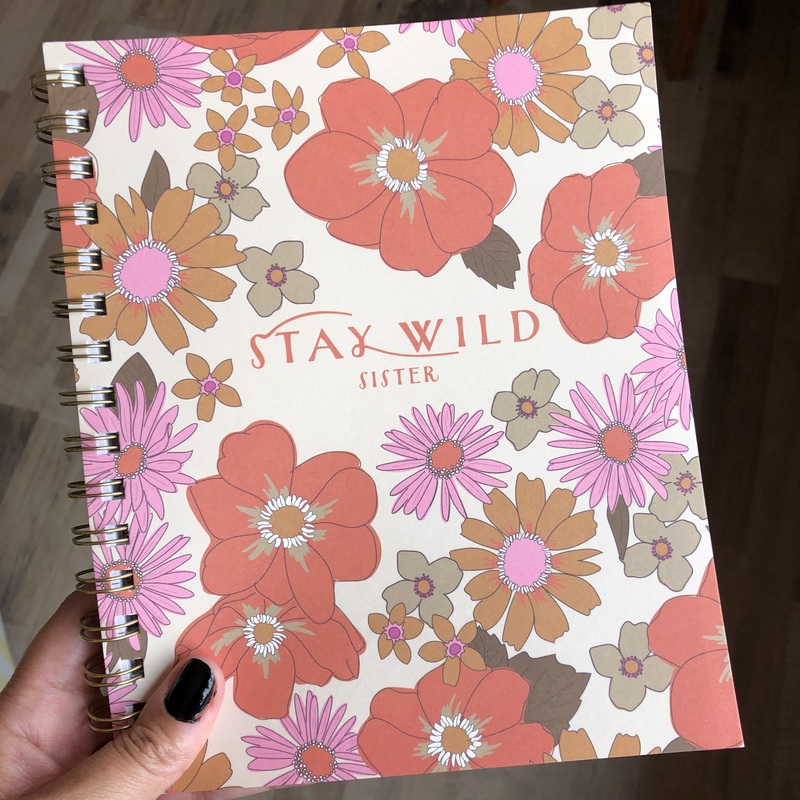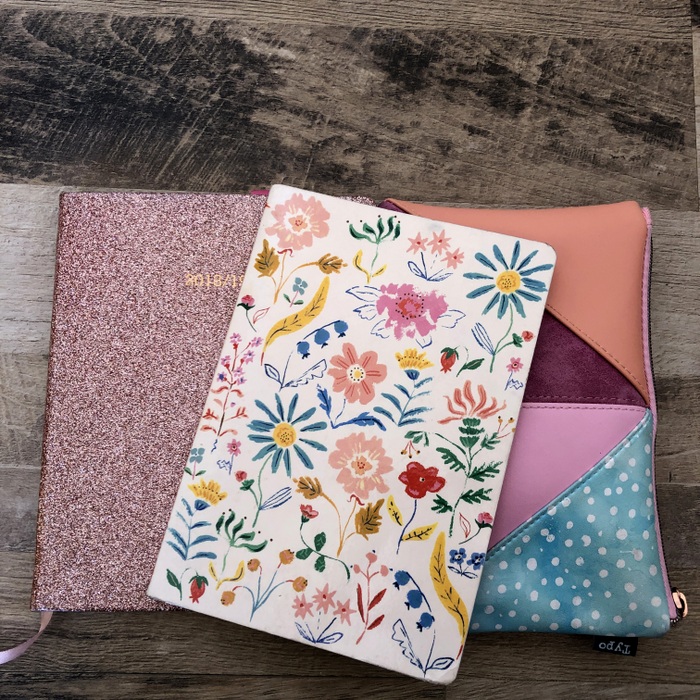
I’m fussy about my stationery but even I’m surprised at how specific I like my various items of work stationery to be! These are called campus notebooks by Typo and I pay R69,99 each or R100 for two (they have them on special a couple of times a year). They’re spiral-bound, a little wider than A5, have 4 sections (more on these sections later) and have lined paper.
They are my favourite notebooks which I use in the following way:
- I keep about 4 pages free in the beginning of the notebook for a few lists: lists of my clients, lists of new business I’m working on and any other lists I might need (sizes of meeting rooms are current favourites because I book enormous meeting rooms during these times, current work projects, and so on)
- I then make a daily eat the frog list, and my ta-da list and goals for the week at the end of each week. It’s my whole end-of-work week routine.
- I start each day with a daily list, make meeting notes and actions, both in preparation for the meetings I run and when I’m a participant. One day can use up anything from 3 – 8 pages, depending on the types of meetings.
- These notebooks used to last 6 months each but during these pandemic times where we work mostly from home and have far more meetings than ever before, they’re stretching to 3 months if I’m lucky. (I just checked my current notebook – I started it on 18 May and looks like I’ll start another one on 18 August).
- I completely ignore the partitions. I know some people like to use one section for clients, one for team meetings, one for something else and one for to-do lists. That’s not how my brain works – my brain works strictly in chronological order. E.g. “when was that client meeting? oh, 4 August.” I then flip to 4 August and find my notes. So I (horror of horrors) just cut out those partitions and I keep just one for a few post-it notes.
And now for the enormous disclaimer…
There is absolutely nothing special about this notebook or any other notebook.

The best notebook is the one that works for you!
Confession – you don’t even need a fancy notebook. An A5 exercise book that school kids use will do.
I would say you need a system to keep up with your work actions, a place to hold the thoughts in your mind, a place to plan the important and not urgent matters (quadrant B items) and a place to reflect back and refer to notes.
If you have that, great!
If not, perhaps try my system – who knows? It might just work for you too. If not, keep the bits that work and start tweaking the other parts.
Which is your favourite notebooks to use for work?
PS Whenever I post something like this, people always say, “why should you use pretty stationery for work?” To that I say, I spend 50+ hours a week on work; I definitely want to use that time and make my environment and tools ones that spark extreme joy for me 🙂

































